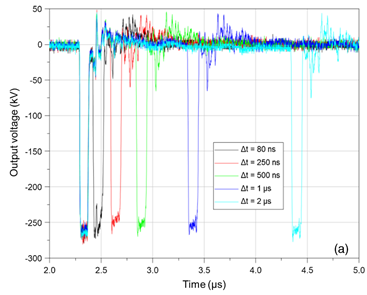HIVOSS ProjectHigh Voltage Solid Switch

Project name: High Voltage Solid Switch
Object: Optimizing the quality of multi-time X-ray measurements with semiconductor materials
Start date: March 1, 2021
End date: February 28, 2025
Coordinator: Common Laboratory SAGE
Scientific manager at the SIAME: SIGOGNE Charly
Permanent members of the SIAME involved: PECASTAING Laurent, SILVESTRE de FERRON Antoine
Contract Type: Collaboration contract
Partner(s) : CEA CESTA , E2S UPPA
Project description
Our partner CEA develops, operates and maintains HPP power systems for various applications, including laboratory-scale experimental simulation of radiative and non-radiative environments. To support this activity, the CEA wishes to improve the quality of their X-ray radiographic devices, in order to observe the very rapid evolution of dense centimetric materials. A major challenge is to be able to X-ray a small object several times in a very short space of time. To achieve this, the pulses dedicated to this radiography must be as repeatable as possible and induce a minimum of reflections. While the first pulse is generally easy to shape, the next is much less so, as wave reflections in the electrical system are mixed with the second pulse. To maintain a useful pulse profile, CEA and UPPA, as part of an E2S UPPA project, have decided to join forces to set up a research program focusing on new solid-state (semiconductor) topologies. The HIgh VOltage Solid Switch (HiVoSS) program, set up within the SAGE joint laboratory, explores several strategies.
The first option is to develop a dynamic resistor capable of compensating for impedance variations in the inductive cell. The solution envisaged is based on a series-parallel combination of semiconductor components. By controlling the various components, the system's equivalent resistance can be adjusted in nanoseconds.
The second line of research is aimed at pre-analyzing the use of high-voltage dispersive lines with semiconductor layers. This study concerns coaxial lines in which layers of semiconductor materials are inserted, offering superior attenuation capacity to reduce rebound without destroying the pulse rising edge.
Voltage profiles for different delays Δt between two successive pulses [1].
[1] R. Delaunay, B. Cadilhon, L. Courtois, I. Mousseau, J. M. Plewa, C. M. Alvinerie, B. Cassany, C. Vermare, T. D’Almeida, and M. Ribière,
Dual-Pulse Generation from a Velvet Cathode with a New Inductive Voltage Adder for x-Ray Flash Radiography Applications,
Physical Review Accelerators and Beams 25, 060401 (2022).
